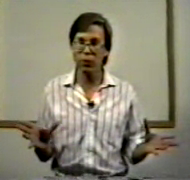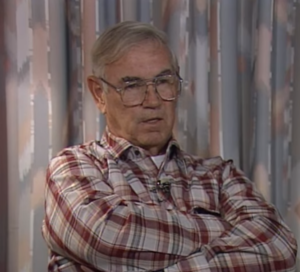Robert Lazar: The Man Behind Area 51’s UFO Mysteries

Introduction
Robert Lazar is one of the most polarizing figures in UFO lore. His claims about reverse-engineering alien spacecraft at a secretive facility near Area 51 have captivated the world since he came forward in 1989. To his supporters, Lazar is a whistleblower bravely exposing hidden truths about extraterrestrial technology. To skeptics, he is a fabricator of tall tales, feeding the public’s appetite for conspiracy theories. Whether hero or hoaxer, Robert Lazar’s story remains a cornerstone in the UFO phenomenon.
The Background: Area 51 and S-4
Lazar first gained notoriety during an interview with investigative journalist George Knapp on Las Vegas’ KLAS-TV. Appearing under the pseudonym “Dennis” and with his face obscured, Lazar claimed he worked as a physicist at a facility called S-4, located near the infamous Area 51 in Nevada. He later revealed his identity and described S-4 as a highly classified site where the U.S. government allegedly studied and attempted to reverse-engineer alien technology.
According to Lazar, the U.S. had recovered multiple extraterrestrial spacecraft, and his job was to study their propulsion systems. He detailed a gravity-based propulsion system powered by an exotic element, which he called Element 115. At the time, Element 115 had not been officially discovered, lending both intrigue and skepticism to his claims.
The Claims and Their Impact
Lazar described a spacecraft that defied conventional physics, utilizing gravity waves to bend space-time. He claimed the craft had no visible wiring, fasteners, or seams, suggesting it was manufactured with technology far beyond human capability. His accounts also included descriptions of briefing documents that referred to extraterrestrials as “The Greys” and suggested long-term alien contact with Earth.
Lazar’s revelations quickly made headlines and became central to Area 51’s reputation as a hub for UFO research. His story fueled global speculation about government cover-ups, inspiring books, documentaries, and public interest in UFO phenomena.
Skepticism and Criticism
Critics have raised significant questions about Lazar’s credibility. Investigations have found no verifiable records of his alleged academic credentials from institutions like MIT and Caltech, or employment at Los Alamos National Laboratory, where he claimed to have worked before S-4. Lazar insists that these records were erased as part of a government cover-up.
Skeptics also point out inconsistencies in his accounts and question the feasibility of his claims about advanced physics. Element 115, which Lazar cited as a cornerstone of alien propulsion systems, was later synthesized in 2003 and named Moscovium. However, its synthesized form is highly unstable and incapable of the properties Lazar described.
Support and Legacy
Despite criticism, Lazar has maintained a loyal following. Supporters argue that his technical descriptions of advanced propulsion systems align with modern theories in theoretical physics, lending credibility to his story. Lazar himself has consistently stated that he wishes he had never come forward, citing relentless scrutiny and harassment.
In recent years, renewed interest in UFOs has given Lazar’s story fresh relevance. The U.S. government’s declassification of UFO-related materials and establishment of investigative programs like AARO (All-domain Anomaly Resolution Office) have rekindled public fascination with the idea of extraterrestrial technology.
Conclusion
Robert Lazar’s story remains one of the most compelling—and controversial—accounts in UFO history. Whether he is a visionary whistleblower or a masterful storyteller, his claims have shaped how the world views Area 51 and the possibility of extraterrestrial life. As new revelations emerge about unidentified aerial phenomena, Lazar’s narrative serves as a reminder of humanity’s enduring curiosity about the unknown.





